Kanarische Inseln |
|
|
|
| Übersicht – Contents: | |
Diese Seite ist Teil des Projektes
Kanarische Inseln |
|
|
|
| Übersicht – Contents: | |
Flaggen – Flags: |
|
 |
Flagge der Kanarischen Inseln |
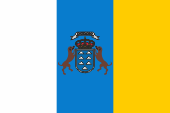 |
inoffizielle Flagge der Kanarischen Inseln |
sonstige Flaggen – other Flags: |
|
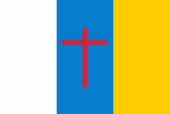 |
1561, Königliche Standarte / Generalflagge – Royal Standard / General Flag, Quelle/Source, nach/by: Wikipedia (ES) |
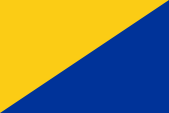 |
Flagge der Seeprovinz Las Palmas – Flag of Las Palmas sea province, Quelle/Source, nach/by: Wikipedia (ES) |
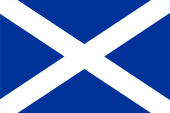 |
Flagge der Seeprovinz Teneriffa – Flag of Tenerife sea province, Quelle/Source, nach/by: Wikipedia (ES) |
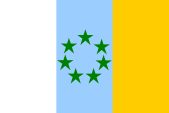 |
Flagge der Unabhängigkeitsbewegung – flag of the independence movement, Seitenverhältnis – ratio = 2:3, Quelle/Source, nach/by: Flags of the World |
Bedeutung/Ursprung der Flagge – Meaning/Origin of the Flag: |
|
| Die Flagge der Kanarischen Inseln stammt aus dem Jahre 1961 und zeigt drei senkrechte Streifen in Weiß, Blau und Gelb. Die Farben der Flagge sollen eine Kombination der Farben der Flaggen der beiden Privinzen sein, aus denen die Kanarischen Inseln bestehen: Teneriffa (weiß und blau) und Las Palmas (blau und gelb). Höchstwahrscheinlich geht sie aber auf eine Flagge aus dem Jahre 1561 zurück, das von dem Schöffen Pedro de Vergara als Zeichen der Verbindung mit der spanischen Monarchie geschaffen wurde. Es gibt Flaggen der Kanaischen Inseln, die der Mitte des blauen Streifens das Wappen der Inseln zeigen. Dabei handelt es sich um eine inoffizielle Flagge. |
The flag of the Canary
Islands dates back to 1961 and features three vertical stripes of white,
blue and yellow. The colors of the flag are intended to be a combination of the colors of the flags of the two provinces that make up the Canary Islands: Tenerife (white and blue) and Las Palmas (blue and yellow). Most likely, however, it goes back to a flag from 1561, created by the magistrate Pedro de Vergara as a sign of the connection with the Spanish monarchy. There are flags of the Canary Islands that show the coat of arms of the islands in the center of the blue stripe. This is an unofficial flag. |
| Seit dem 02.12.2005
sind die Farben exakt definiert: Blau = Pantone 3005, Gelb = Pantone 7406. |
Since the 2nd of December in 2005,
the colors have been precisely defined: Blue = Pantone 3005, yellow = Pantone 7406. |
| Quelle/Source nach/by: Wikipedia (DE), Wikipedia (ES) | |
Wappen – Coat of Arms: |
|
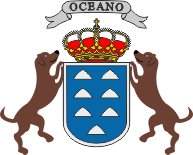 |
Wappen der Kanaren – coat of arms of the Canary Islands, Quelle/Source, nach by: Wikipedia (DE) |
Bedeutung/Ursprung des Wappens – Meaning/Origin of the Coat of Arms: |
|
| Es zeigt sieben silberne Berge auf blauem Grund, überhöht von einer goldenen Krone. Sie stehen für die sieben großen Inseln der Inselgruppe. Schildhalter sind zwei Hunde – ein Hinweis auf den Namen der Inselgruppe. Im Spruchband über dem Wappen das Wort "Oceano" → "Ozean". | It shows seven silvery mountains on a blue ground and above a golden crown. They stand for the seven big islands of the archipelago. Shield holders are two dogs – a clue for the name of the archipelago. In the motto ribbon above the scutcheon the word "Oceano" → "Ocean". |
| Quelle/Source: Wikipedia (DE) | |
Landkarte – Map: |
Landkarte des Landes – Map of the Country: |
Zahlen und Fakten – Numbers and Facts: |
|
|
|
|
|
|
|
|
|
|
|
|
|
|
|
|
|
|
Antike · bereits im Altertum war die Inselgruppe als
„Inseln der Glückseligen“ bekannt Mittelalter · auf der Suche nach einem Seeweg nach Indien werden die Inseln wieder entdeckt 1478 · Spanien ergreift Besitz von den Inseln, wichtiger Stützpunkt für die spanischen Entdeckungs- und Eroberungsfahrten 1927 · wegen aufkommender Rivalitäten zwischen den einzelnen Inseln werden die Kanarischen Inseln in zwei Provinzen aufgeteilt 1981 · Autonomiestatut für die Kanaren mit begrenzten Vollmachten für die Regionalregierung |
|
antiquity · already in the antiquity the archipelago was well known
as „Islands of the Blissful“ middle ages · in the search for a sea route to India the islands get discovered again 1478 · Spain takes possession from the islands and becomes an important base for Spanish discovery and conquest rides 1927 · because of rising rivalries between the islands the Canary Islands become partitioned into two provinces 1981 · autonomy statute for the Canary Islands with limited rights for the regional government |
| Quelle/Source: Atlas zur Geschichte, Discovery '97, Wikipedia (D) |
Ursprung des Landesnamens – Origin of the Country's Name: |
|
| Die im 15. Jahrhundert ankommenden Spanier nannten die Inseln Hundsinseln (Islas Canarias), angeblich wegen der ungewöhnlich großen Hunde, die von den damals noch hier lebenden Ureinwohnern gehalten worden seien. | The Spanish who arrived in the 15th century named the islands of Dog Islands (Islas Canarias), allegedly because of the unusually large dogs that had been kept by the indigenous people who then still lived here. |
| Quelle/Source: Handbuch der geographischen Namen | |